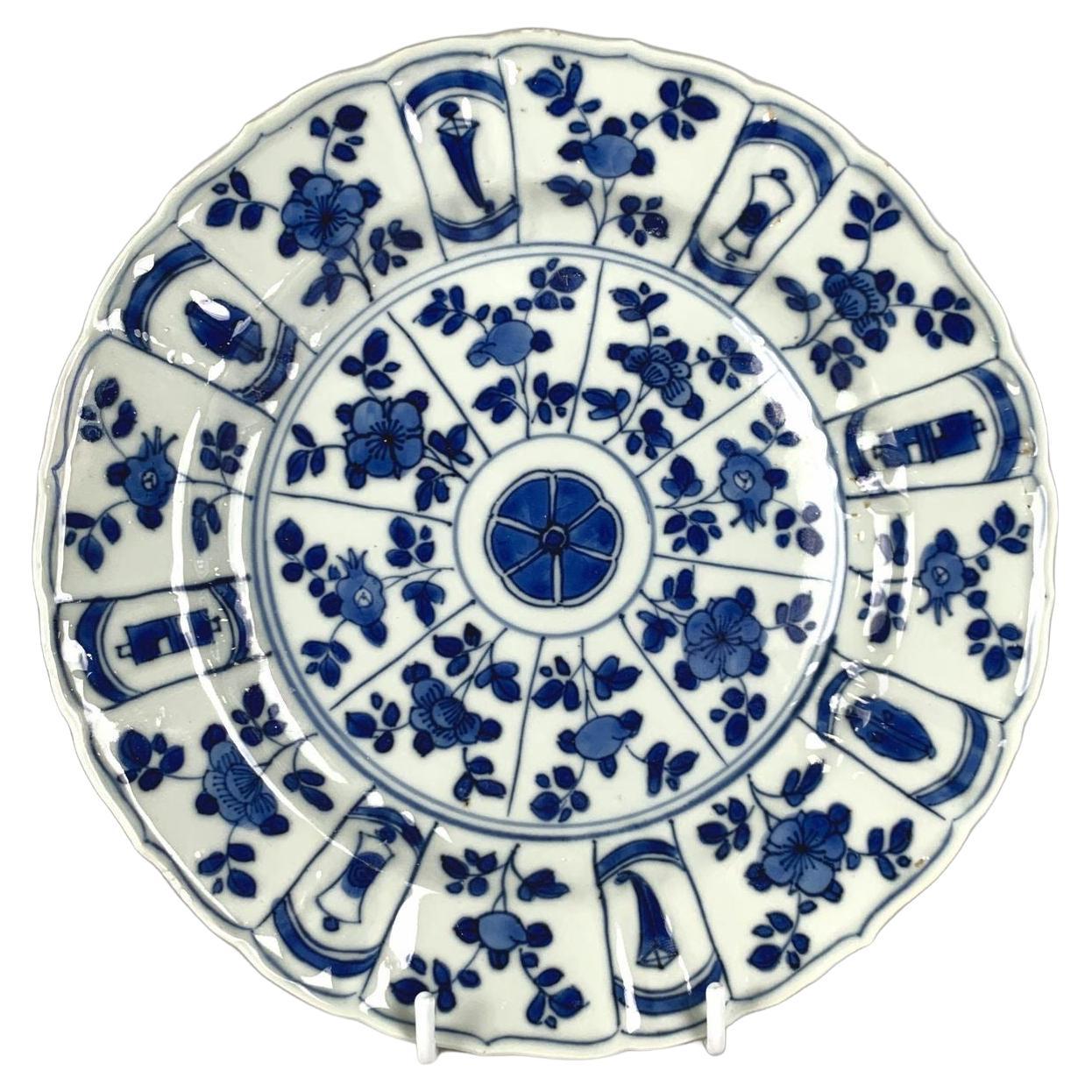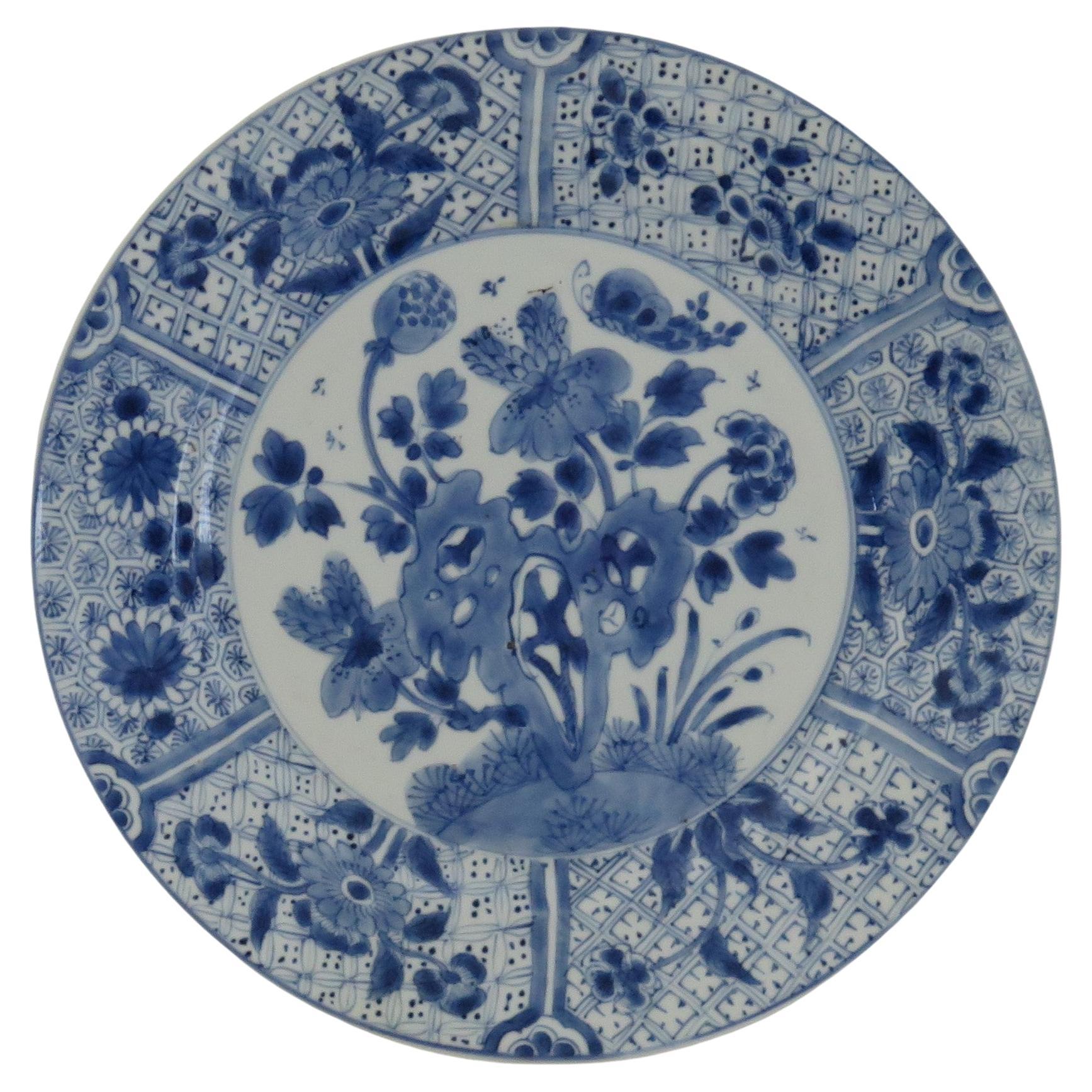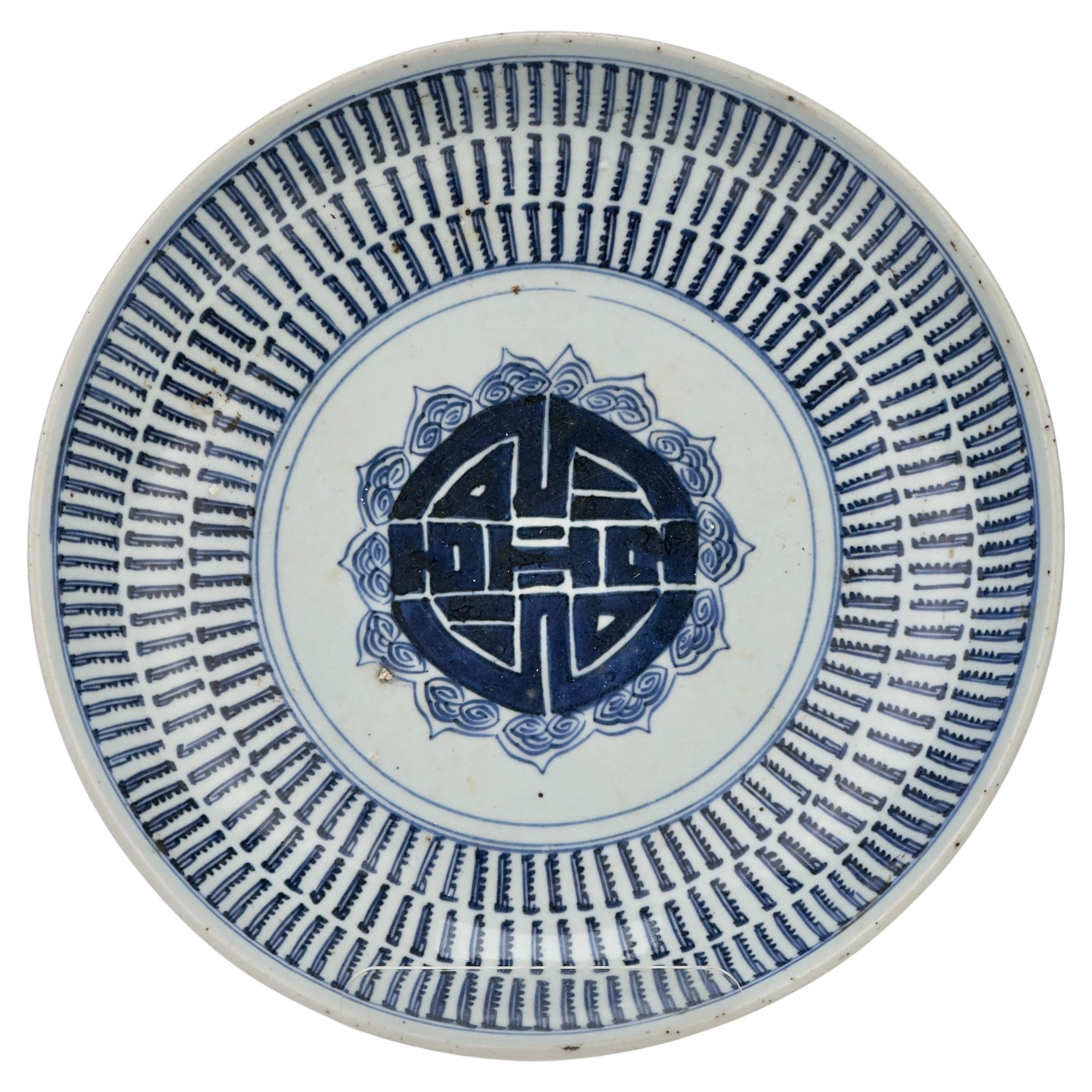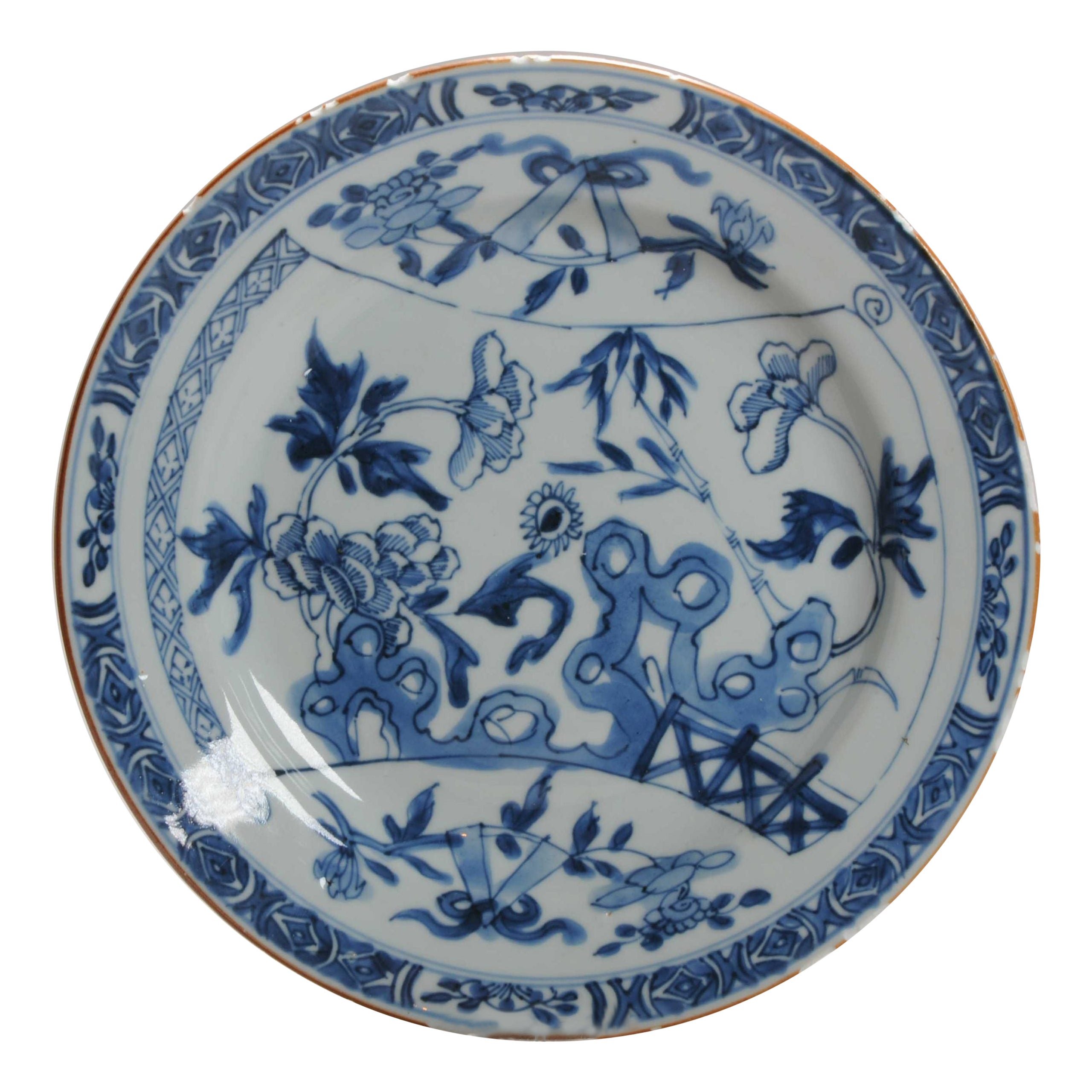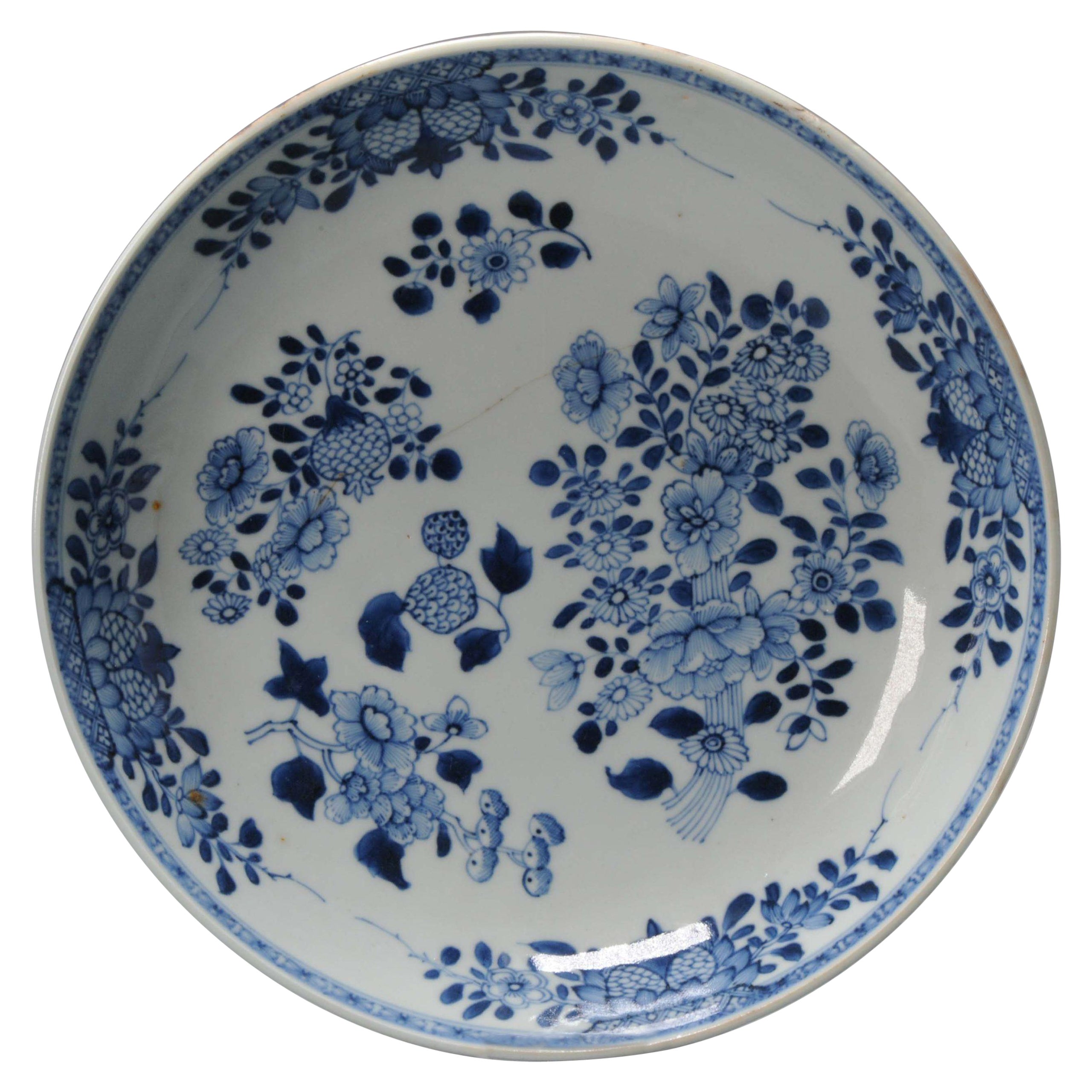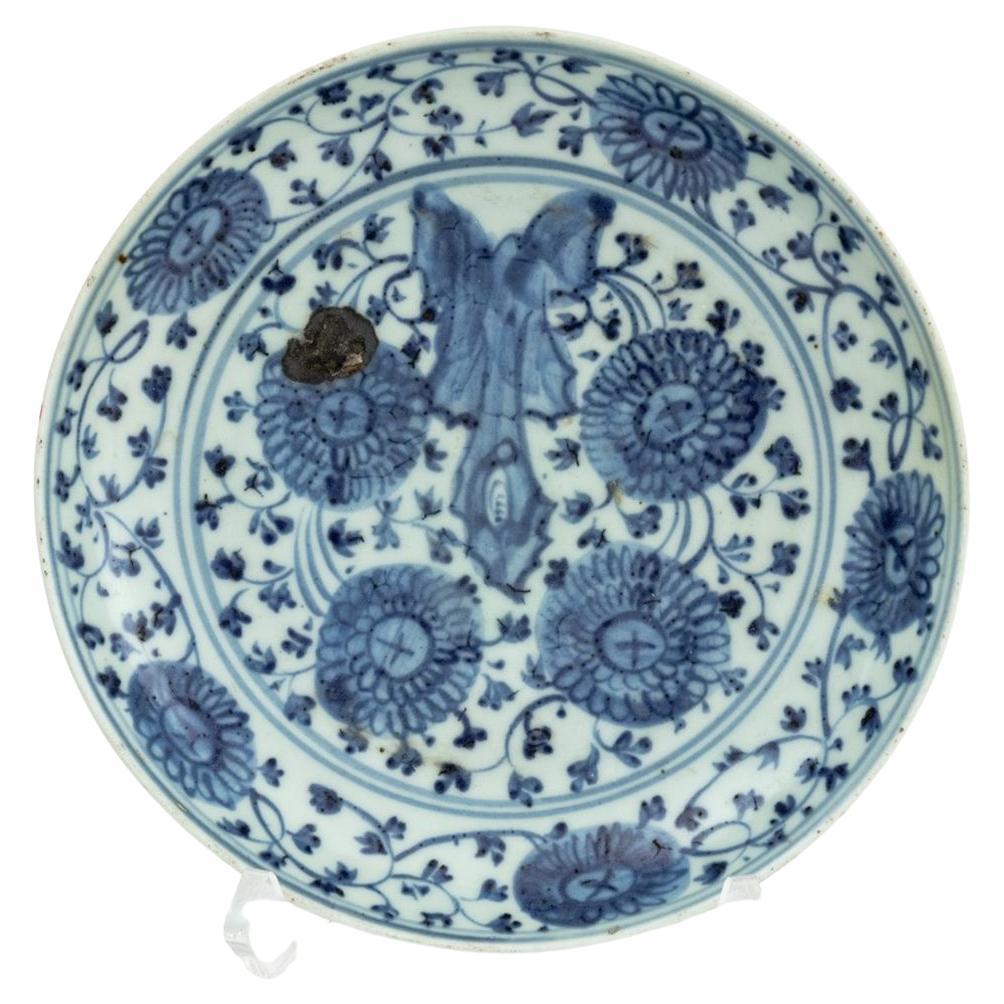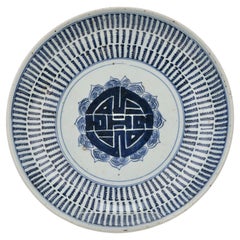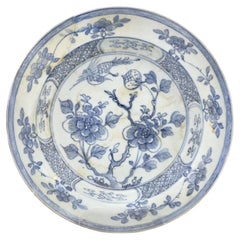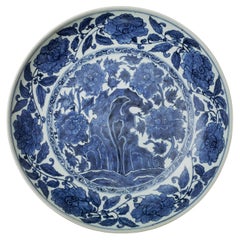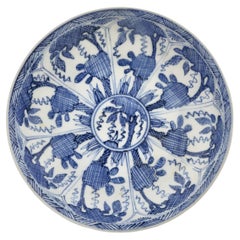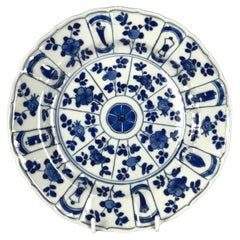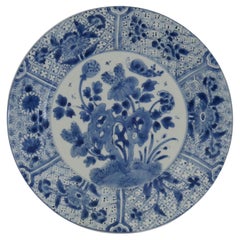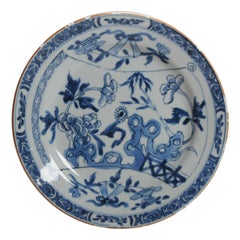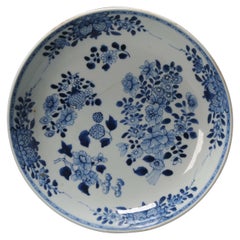Items Similar to Chinese Swatow Blue and White Ceramic Dish, Late Ming Dynasty
Want more images or videos?
Request additional images or videos from the seller
1 of 11
Chinese Swatow Blue and White Ceramic Dish, Late Ming Dynasty
$1,500
£1,138.17
€1,301.39
CA$2,095.09
A$2,329.46
CHF 1,216.31
MX$28,355.18
NOK 15,519.65
SEK 14,541.17
DKK 9,712.52
Shipping
Retrieving quote...The 1stDibs Promise:
Authenticity Guarantee,
Money-Back Guarantee,
24-Hour Cancellation
About the Item
Famous late ming dynasty chinese blue and white porcelain plate, double phoenix, from the shipwrecked binh thuan
Period: Ming Dynasty (1368-1644)
Region: Jingdezhen, China
Type: Blue and White Porcelain
Size : 5.5 cm / 27.0cm
Reference :
1) Christie's Melbourne, 2004 - The Binh Thuan Shipwreck, auction sale catalogue
2) Asian Ceramic Found along Maritime Silk Route by The National Museum of Vietnamese History
3) CHRISTIES MELBOURNE 8–9 MAR 2006 - DECORATIVE ARTS - LOT 101
(Price realised : 1,912 AUD / Type : Highly related)
* Binh Thuan ship
The Binh Thuan shipwreck was discovered in 2001 near the province of Binh Thuan, Vietnam. It is the remains of a late 17th-century Chinese merchant ship that was carrying a variety of trade goods, predominantly Chinese blue and white porcelain, along the Southeast Asian trade routes.
At the time of discovery, the ship held a large quantity of ceramics, along with wooden, metal artifacts, and other trade items, most of which were well-preserved. The porcelain recovered from the Binh Thuan shipwreck demonstrates exquisite craftsmanship and provides insight into the production techniques and aesthetics of Chinese porcelain at the time, as well as the trade relationships between China and Southeast Asia.
This find has made significant contributions to the fields of maritime archaeology, history, and the study of trade routes. The artifacts from the Binh Thuan shipwreck are now displayed in various museums and by private collectors, serving as valuable resources for studying the art and culture of the late Ming Dynasty.
About the Seller
4.8
Gold Seller
Premium sellers maintaining a 4.3+ rating and 24-hour response times
Established in 1999
1stDibs seller since 2023
38 sales on 1stDibs
Typical response time: <1 hour
- ShippingRetrieving quote...Shipping from: seoul, Korea South
- Return Policy
Authenticity Guarantee
In the unlikely event there’s an issue with an item’s authenticity, contact us within 1 year for a full refund. DetailsMoney-Back Guarantee
If your item is not as described, is damaged in transit, or does not arrive, contact us within 7 days for a full refund. Details24-Hour Cancellation
You have a 24-hour grace period in which to reconsider your purchase, with no questions asked.Vetted Professional Sellers
Our world-class sellers must adhere to strict standards for service and quality, maintaining the integrity of our listings.Price-Match Guarantee
If you find that a seller listed the same item for a lower price elsewhere, we’ll match it.Trusted Global Delivery
Our best-in-class carrier network provides specialized shipping options worldwide, including custom delivery.More From This Seller
View AllBlue and White Porcelain Longevity Dish, Qing Period (18-19th century)
Located in seoul, KR
The dish features underglaze cobalt blue decoration, showcasing the Chinese character "shou" (symbolizing long life) at the center. Surrounding the center are bands with a stylized S...
Category
Antique Early 19th Century East Asian Qing Decorative Bowls
Materials
Ceramic, Porcelain
Blue and White Bowl Circa 1725, Qing Dynasty, Yongzheng Era
Located in seoul, KR
Bowl decorated with beautiful floral and bird pattern. Cracks on surface due to underwater excavation condition. Relatively rare piece among Ca Mau ship pieces.
Period : Qing Dynast...
Category
Antique 1720s Vietnamese Qing Antiquities
Materials
Ceramic, Porcelain
$513 Sale Price
35% Off
Large Blue and White with 'Rockwork and Flowers' Dish, Qing dynasty
Located in seoul, KR
This dish features a rockwork design that was popular during the Mid to Late Ming dynasties. The blue-and-white underglaze effectively captures the vibrant tones typical of the late Ming and early Qing periods. The detailed depiction of flowers, leaves, and rockwork is both rich and vivid. Due to its excavation from the seabed, the glaze in the central area shows signs of wear, particularly compared to the more preserved sides of the dish. Although it was soaked in hot water to remove the salt at the time of acquisition, slight salt residue remains on the surface.
Period : Qing Dynasty(Presumably Kangxi or Yongzheng Period)
Type : Dish
Medium : Blue and White glaze
Condition : Excellent(slight salt residue remains on the surface, and the glaze is worn primarily around the edges.)
Provenance: Southeast Asia, South China Sea from Shipwreck in early 2000s
Reference :
1) Christies Newyork 22 MAR 2018 - The Studio of the Clear Garden: Chinese Ceramics and Works of Art - Lot 604
(Price realised : USD 732,500 / Type : related - Ming style)
2) Sotheby's London 4 November 2020 - Imperial Porcelain – A Private Collection - Lot 19
(Price realised : GBP 75,600 / Type : related - Yuan style)
3) Asian Art Museum, San Francisco - Object number B60P88
(Type : related - Ming style)
4) Art Institute Chicago - Reference Number 1997.390 - Large Foliate Dish with Garden Rock and Plants
(Type : Closely related)
* Yuan-Ming Style from Qing Dynasty
During the Qing dynasty, many ceramics were produced that imitated the styles of the Ming and Yuan dynasties. This practice was not mere imitation but a creative endeavor to inherit and innovate upon past techniques and styles. Qing dynasty ceramicists mastered the exceptional techniques of Ming and Yuan ceramics and used them as a foundation to develop more advanced works. Particularly, Yuan dynasty blue and white porcelain...
Category
Antique Early 18th Century Vietnamese Qing Ceramics
Materials
Ceramic, Porcelain
$9,750 Sale Price
35% Off
Blue and White Saucer, Qing Dynasty, Kangxi Era, Circa 1690
Located in seoul, KR
It features a complex design with a central circular motif surrounded by eight petal-like sections, each intricately adorned with various botanical and geometric patterns, creating a symmetrical arrangement.
The number 8 in Chinese culture is associated with prosperity and is considered very auspicious. This may reflect the traditional Chinese cosmological concept of the "Bagua," which are eight trigrams used in Taoist philosophy to represent fundamental principles of reality, seen in various aspects of Chinese culture, including the I Ching and Feng Shui.
The central circle with radiating petals is also a representation of perfect geometric harmony, reflecting the balance and unity which are key elements in Chinese aesthetics. The use of symmetry and balance is seen as a way to represent the harmony of the universe.
Period : Qing Dynasty, Kangxi Period
Production Date : 1690-1699
Made in : Jingdezhen
Destination : Netherland
Found/Acquired : Southeast Asia , South China Sea, Vung Tau ship
Size : 12.5cm (Diameter)
Condition : Excellent
Reference : Double checked with reference to the original catalogues
1) Christies Amsterdam 1992 - Vung Tau Cargo / Christies
2) Qing Dynasty Export Blue and White(淸代外销靑花瓷) - Vung Tau Cargo Catalogue / Guangxi Fine Art Publishing House
3) Asian Ceramic Found along Maritime Silk Route / National Maritime Museum of Korea
* Vung Tau Cargo Porcelain...
Category
Antique 1690s Vietnamese Qing Antiquities
Materials
Ceramic
$594 Sale Price
24% Off
Blue And White Kraak Plate, Late Ming Dynasty
Located in seoul, KR
A Chinese blue and white Kraak plate, the central roundel depicting birds and floral design in a waterside, the rim with panels enclosing foliage and decorative objects.
Period: Late Ming-Early Qing Dynasty (17th century)
Type: Blue and White Porcelain
Provenance : Acquired early 2000s from Southeast asia(Probably from Shipwreck)
Reference :
1) Sotheby's London 12 November 2019 - STYLE: Private Collections - Lot 12
(Price range : 3,000GBP-5,000GBP / Type : Closely related)
2) Christies NEW YORK - 1–11 MAY 2018 - THE COLLECTION OF PEGGY AND DAVID ROCKEFELLER: ONLINE SALE - Lot 1405
(Price realised : 5,625 USD / Type : Highly related)
* Kraak
Kraak porcelain is a type of Chinese export porcelain that was produced during the late Ming Dynasty, especially during the reign of the Wanli Emperor (1573-1620). It is famous for its distinctive design and style. Kraak ware...
Category
Antique 17th Century Indonesian Ming Antiquities
Materials
Ceramic, Porcelain
$1,495 Sale Price
50% Off
Blue and White 'Cranes in pond' Dish, Qing Dynasty, Kangxi Era, Circa 1690
Located in seoul, KR
At the center, it features five elegant cranes depicted against a pond setting, each portrayed in varying postures. The background harmoniously incorporates lotus flowers and other aquatic plants. Cranes in East Asian culture symbolize purity, longevity, and loyalty, and their depiction here enhances the themes of peace and harmony. The outer rim of the plate is encircled by a continuous lattice border, within which are alternately placed floral and geometric patterns, delicately executed.
Period : Qing Dynasty, Kangxi Period
Production Date : 1690-1699
Made in : Jingdezhen
Destination : Netherland
Found/Acquired : Southeast Asia , South China Sea, Vung Tau ship
Size : 20cm (Diameter) x 3.5cm (Height)
Condition : Excellent
Reference : Double checked with reference to the original catalogues
1) Christies Amsterdam 1992 - Vung Tau Cargo / Christies
2) Qing Dynasty Export Blue and White(淸代外销靑花瓷) - Vung Tau Cargo Catalogue / Guangxi Fine Art Publishing House
3) Asian Ceramic Found along Maritime Silk Route / National Maritime Museum of Korea
* Vung Tau Cargo Porcelain...
Category
Antique 1690s Vietnamese Qing Decorative Dishes and Vide-Poche
Materials
Ceramic, Porcelain
$1,228 Sale Price
35% Off
You May Also Like
Antique Blue and White Chinese Export Porcelain Dish Hand Painted Kangxi 1700
Located in Katonah, NY
This beautiful blue and white porcelain dish was made in China during the Kangxi reign (1662–1722).
It was created specifically for export to the European market.
Measuring 8.25 inch...
Category
Antique Early 18th Century Chinese Chinese Export Ceramics
Materials
Porcelain
Chinese Kangxi Mark & period Plate or Dish Porcelain Blue & White, Ca 1700
Located in Lincoln, Lincolnshire
This is a very beautifully hand-painted Chinese porcelain blue and white large plate or Dish, from the Qing, Kangxi period, 1662-1722.
The plate / dish is finely potted with a caref...
Category
Antique Late 17th Century Chinese Qing Ceramics
Materials
Porcelain
Antique Plate Chinese Porcelain Blue and White Plate Kangxi Period, 18th Century
Located in Amsterdam, Noord Holland
Antique Plate 18th Century Chinese Porcelain Blue and White Plate Kangxi Period.
A very nicely decorated plate with flowers.
Additional information:
Material: Porcelain & Pottery
D...
Category
Antique 18th Century Chinese Qing Decorative Dishes and Vide-Poche
Materials
Porcelain
$294 Sale Price
20% Off
Antique Chinese Porcelain Qianlong Blue And White Plate, 18th Century
Located in Amsterdam, Noord Holland
A very nice, richly decorated deep plate.
Additional information:
Material: Porcelain & Pottery
Type: Plates
Color: Blue & White
Region of Origin: China
Emperor: Qianlong (1735-1796...
Category
Antique 18th Century Chinese Decorative Dishes and Vide-Poche
Materials
Porcelain
$318 Sale Price
20% Off
Chinese Blue and White Porcelain Shallow Bowl
Located in Astoria, NY
Chinese Blue and White Porcelain Shallow Bowl, with floral and vine motif. 1.5" H x 7.75" Diameter. Provenance: From an Upper East Side Collection.
Category
Early 20th Century Chinese Qing Ceramics
Materials
Porcelain
17th Century Arita Dish Blue White Export Porcelain Charger Ming Edo Period
By Delft, Arita, 1616 / Arita Japan
Located in Wommelgem, VAN
Large 17th Century Japanese Edo Period Arita dish Chinoiserie blue and white Wanli Kraak Charger
Material: Ceramic, porcelain
Design: Arita, Ming Dynasty, Wanli style, Chinoiserie
Style: Ming, William and Mary - Louis XIV Baroque, Antique, Asian antique, Oriental
Origin: Japan, Arita, 17th century
Colors: Blue and white, the blue is unbelievable fabulous
Decor: Chinoiserie, Chinese Wanli style known as "kraakdish"
Description: Large 17th Century ceramic...
Category
Antique 17th Century Japanese Edo Ceramics
Materials
Ceramic, Porcelain
More Ways To Browse
17th Century Blue And White
Merchant Ship
Chinese 3 Ceramic
China Blue And White Porcelain Plate
17th Century Blue And White China
Ming Blue White
Ming Dynasty Porcelain
Blue And White Ming Porcelain
Large Chinese Dish
Ming Dynasty Blue
Asian Plate Display
Shipwreck Antique
Ming Dynasty Glazed
Ming Plate
16th Century Chinese Porcelain
Blue Phoenix China
Chinese Ming Plate
Ming Dynasty Blue And White Porcelain
